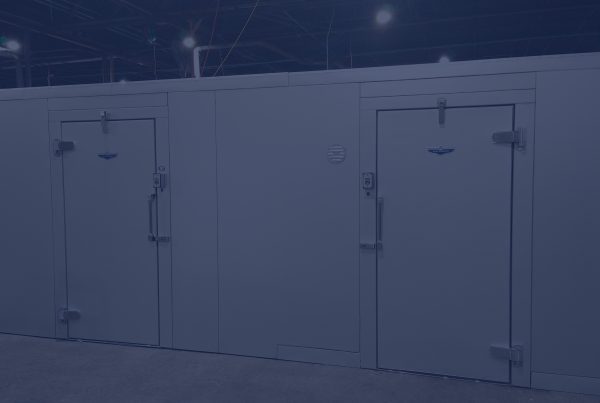Temperature control and organized inventory are food-safety watchwords.
When Connie’s Pizza, a nine-unit Chicago-based chain, reorganized its walk-in coolers for better efficiency and improved food safety, management liked the results.
Labeling and dating food will help reduce food waste.
“By reconfiguring the coolers we were able to reduce stock and rotate it more effectively,” says owner Ivan Matsunaga. “We saved 3% to 5% on shrinkage and perishables.’’
The reorganized walk-ins also are easier to navigate, which encourages employees to keep the coolers tidy. In accordance with health and sanitation practices, raw meat and poultry is kept on lower shelves. Prepared and ready-to-eat foods and salads, cooked meats and ham are stowed on higher racks. Walk-in temperature is kept at 37F, and foods are tagged and dated upon arrival to ensure proper rotation.
Connie’s cooler remodel was part of a company wide initiative to improve food safety during which the chain’s 250 employees attended demonstrations on sanitation, stock organization and rotation. Because staff participated in the food-safety update, everyone now is held accountable.
Temperature and organization are critical to maintaining a food-safe walk-in cooler, says Kristie Grzywinski, senior program manager for food safety at the National Restaurant Association’s Educational Foundation, Chicago. Keep foods in the cooler at an internal temperature of 41F. “Some restaurants have the luxury of several walk-ins. Most don’t,” explains the microbiologist. “That’s why organization of shelves and inventory is critical.”
She advises designating separate sections for raw and ready-to-eat foods to minimize risk of cross-contamination. Additionally, Grzywinski warns operators not overload racks, which taxes shelving integrity and impedes air circulation. Be aware of temperature variations inside the walk-in: warmer by the door, cooler in the rear. (Store meats, fish and dairy products in the cooler back area and produce closer to the front.) Shelves must be no closer than six inches from the floor to ease cleaning under racks. And allow plenty of headroom in the cooler to ensure adequate air circulation for steady temperatures and lower utility bills.
Maintaining food safety is a team effort at University of Connecticut, Storrs. The school is in the middle of upgrading its walk-in coolers, some of which are 30 years old. Michael Pascucilla, a university environmental health and safety specialist, is coordinating the updating with Dennis Pierce, the university’s associate director of dining services, responsible for 65,000 meals per week at 14 on-campus facilities.
In addition to new equipment, university cooks and dining-service managers are participating in food-safety programs that include demonstrations of walk-in inventory organization. They’re also being taught to read cooler temperature gauges—up to seven times a day depending on food volume and cooler activity. Larger facilities are assigned an inventory-control clerk or storekeeper who checks logs every 30 minutes during business hours.




